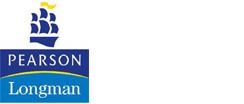Continuing Mathematics Project
The Continuing Mathematics Project (CMP), published by Longman in the 1970s, was conceived as a response to the problem of insufficiently numerate students who were studying beyond '0' level. The Dainton Report recommended that " ... normally all pupils should study mathematics until they leave school ...". The provision of courses was problematic, partly because of the diverse needs of the students and partly because a critical shortage of mathematics teachers made it difficult to provide appropriate courses in many schools. This climate of concern coincided with the founding of a new government-funded organisation – the National Council for Educational Technology. Soon after it was established, the National Council held a conference to consider areas of the education system where it might promote and stimulate activity demonstrating the contribution of educational technology in the systematic development and evaluation of learning systems. Initially the Project was conceived to have quite a revolutionary structure with units, each containing a system of programmes and diagnostic tests, that would include audio-visual resources where appropriate. In addition, there would be accompanying materials for teachers, such as teacher manuals and films of the material in use. Teachers suggested independent learning materials might make a welcome contribution. The relative complexity of material involving texts, answer booklets, games, film-strips and tapes was immediately seen as a major problem by the specialists who identified the marketing difficulties which were likely to arise. Although some initial units had audiovisual materials, it was distilled into self learning booklets. These booklets were divided into three categories: (i) revision units (ii) introductory units (iii) sequences of units forming short courses.
Resources
Filter
Transformation of Formulae from the Continuing Mathematics Project builds on the work covered in the unit entitled Working with Ratios.
The objectives of this unit are to enable students to acquire the skills necessary to transform formulae which involve algebraical fractions, brackets, and roots, as well as...
This unit from the Continuing Mathematics Project has been planned to help students remember and understand what indices indicate and the rules they obey. As with all the units in this collection the text is designed to test as it teaches and is in sections.
This unit from the Continuing Mathematics Project is about the relationship between two quantities (correlation). If the two quantities are height of father and height of son, then we often want to know the extent to which 'tall fathers have tall sons'. Two quantities may be correlated quite strongly while another...
This unit from the Continuing Mathematics Project on flowcharts and Algorithms employs, three basic conventions:
(i) the use of a flowchart and the appropriate symbols
(ii) the use of computer statements, such as 'c = c + I1
(iii) the use of the inequality signs >, <, ≤ and ≥
Three very...






